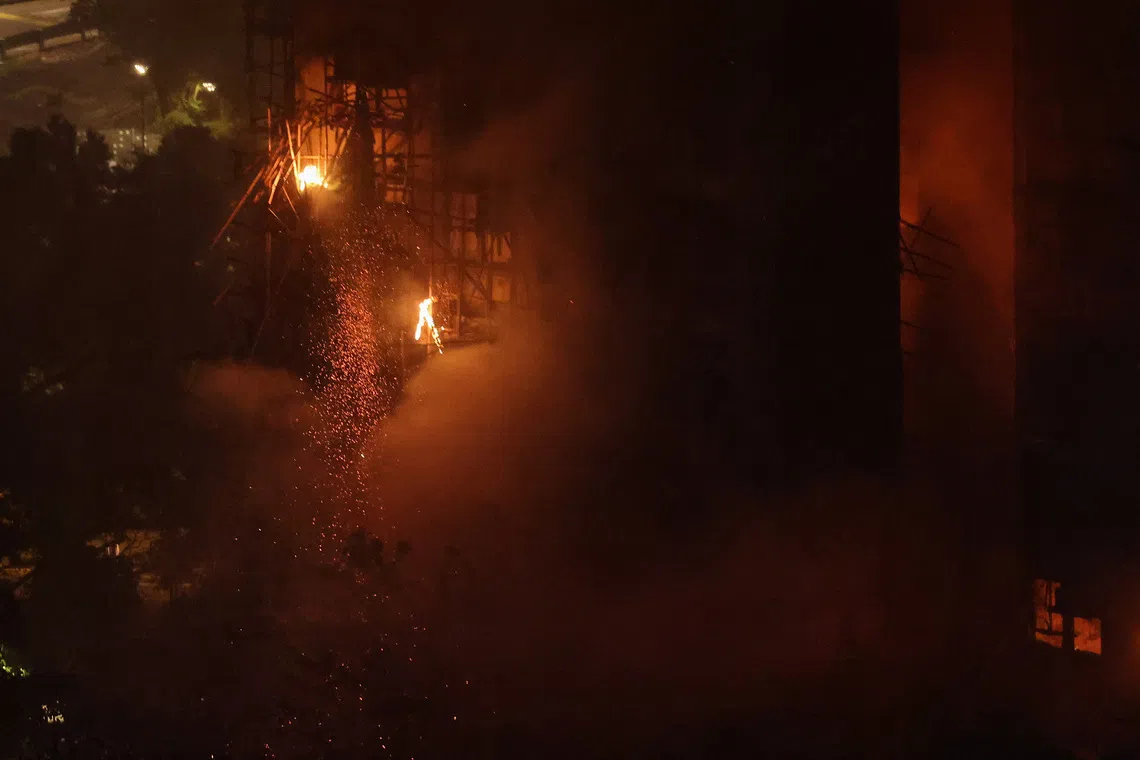Deadly Hong Kong Inferno Exposes Critical Risks of Traditional Bamboo Scaffolding
A catastrophic inferno that recently engulfed bamboo scaffolding on a building at the Wang Fuk Court housing estate in Tai Po, Hong Kong, has tragically claimed the lives of at least 36 individuals. This devastating incident, occurring on November 26, 2025, marks Hong Kong's deadliest fire in three decades and has starkly illuminated the inherent risks associated with its long-standing reliance on flammable bamboo scaffolding and mesh in construction.
The precise origin of the blaze remains under investigation by a task force established by Hong Kong's leader, John Lee. However, the rapidity with which the fire consumed the green construction netting and caused bamboo lattices to collapse in flames was undeniably apparent. This widespread use of bamboo for scaffolding, a tradition centuries old originating from mainland China, persists in Hong Kong due to its perceived affordability, abundance, and flexibility, with nylon cords used for binding.
A Legacy of Bamboo: Hong Kong's Unique Construction Landscape
While bamboo, historically revered in Chinese architecture and even linked to the construction of the Great Wall, has largely been phased out in mainland China in favor of more robust metal scaffolding, Hong Kong continues to embrace this traditional method. Official figures indicate approximately 2,500 registered bamboo scaffolding masters still operate in the city, though metal scaffolders outnumber them threefold. The sight of these skilled teams erecting towering bamboo structures around gleaming skyscrapers within weeks remains an iconic image of the global financial hub. These bamboo structures are frequently complemented by green mesh, intended to protect passers-by from falling debris, as observed at the Wang Fuk Court.
Government Response and Ongoing Concerns
In the wake of the tragedy, Chief Executive John Lee announced that the Buildings Department's independent review unit would investigate whether the building's exterior walls met fire retardant standards, vowing accountability for any non-compliance. Furthermore, the government has pledged to conduct special checks on ongoing construction projects to ensure scaffolding mesh materials adhere to fire retardant and other safety standards.
Despite a government directive in March mandating that 50% of new public works contracts use metal scaffolding moving forward, the primary emphasis had previously been on worker safety rather than fire risks. Official data reveals 22 deaths involving bamboo scaffolders between 2019 and 2024. Curiously, Hong Kong's secretary for labour, Chris Sun, stated in July that there was "no intention to ban the use of bamboo scaffolds at the moment."
Pattern of Incidents and Unheeded Warnings
This incident is not isolated. In October, a substantial bamboo scaffolding structure at Chinachem Tower in the Central business district also caught fire, charring windows and external walls. The Association for the Rights of Industrial Accident Victims in Hong Kong noted at least two other bamboo scaffolding fires earlier this year. The Hong Kong Labour Department's Code of Practice for Bamboo Scaffolding Safety explicitly states that protective nets, screens, and sheeting should possess "appropriate fire retardant properties in compliance with a recognised standard."
Concerns about fire hazards in scaffolding nets at housing complexes were raised last year by whistleblower Jason Poon, who had previously exposed shoddy construction work. He claims his warnings to various government departments regarding a lack of fire retardant properties were disregarded. The latest disaster underscores the urgent need for a comprehensive reassessment of construction safety practices and material standards in Hong Kong.

